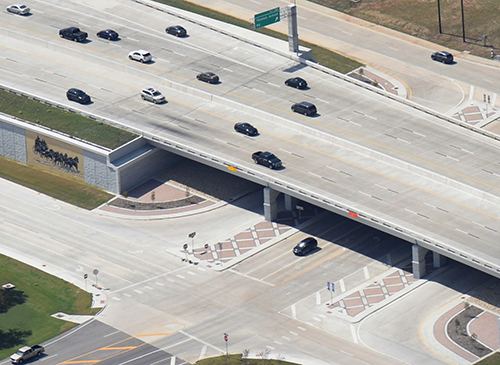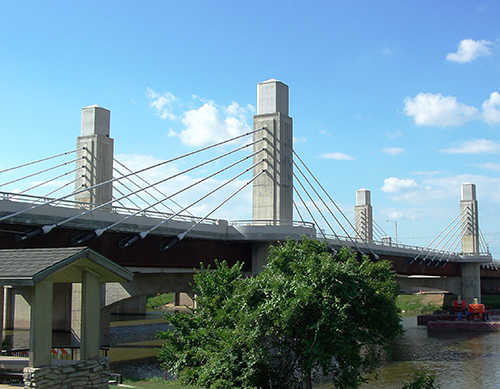"We (TxDOT) could not have projected 40 years ago the traffic and growth we have today on Interstate 35," says Alisa Polansky, transportation engineer supervisor in the Waco District's Advanced Project Planning group. "But a study done 20 years ago indicated that additional lanes were needed then."
So it was no surprise to her when planning began in 1999 that rebuilding I-35 was going to be a big job. In addition to the basic need for additional lanes, the original pavement had outlived its intended lifespan and far outperformed its original traffic-load design expectations. All those together meant it was time for a total replacement of the existing highway.

A number of things had to be addressed in the planning for reconstruction, Polansky explains. For example, the planning teams took into account the predicted traffic loads for the year 2039, 40 years from the start of the process. Widening the highway meant assessing the impact of possible changes on historic properties, past drainage issues and solutions to reduce the incidence of flooding, and including updated federal requirements for interstate highways that now require all access roads to be one-way (a major improvement in safety for the driving public). This last item led to the addition of new crossings and U-turn lanes in some areas, to improve mobility and safety for local citizens. Locations of the new crossings were determined through public input and city coordination, and, in the case of Temple, the consolidation of two very close crossings were combined into a single bridge, helping to keep costs down and improving mobility in the area.

Newer requirements also limit the number and spacing of driveways that can directly access the new frontage roads, and increase the distance from intersections for driveway access.
On- and off-ramps were changed in several ways. In addition to lengthening the ramps, the order was reversed in most places: instead of an on-ramp followed by an off-ramp, the off-ramp comes first, with a temporary dedicated lane that allows traffic changing lanes to do it in the slower lanes, increasing safety. Polansky explains, "Exit ramps near the intersection force traffic to back up onto the mainlanes, impacting high-speed mainlane traffic, whereas exits farther from the intersection allow more room for vehicles on the frontage road."
The public was involved in the planning process from the beginning, according to Polansky, "with multiple public meetings in each area/town. Everyone agreed that I-35 needed to be widened, but not everyone agreed on how that should be done. We met with each city to incorporate their needs and get their input on access and aesthetics."
And with an eye to the future of the highway, she and the planning teams made sure the design allows for more of widening as Texas continues to grow.
Jake Smith
I-35 Public Information Officer
254-867-2705
Contact My35